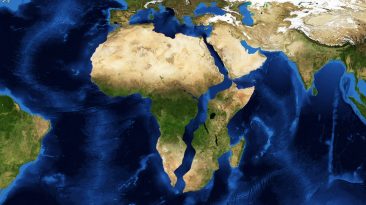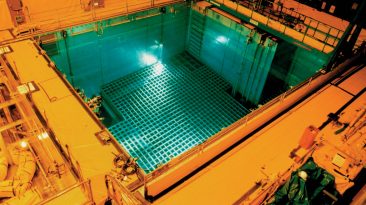In an effort to fight climate change, the Sahara Desert could be going green… literally. Plans are being made to terraform the entire Sahara desert; changing it from a dry, barren landscape to a lush green space.
If successful, the transformation could remove 7.6 billion tons of atmospheric carbon yearly. How could we change the nature of such a vast, isolated landscape?
Could we afford the giant price tag that would come along with it? Have we ever done anything like this before?
The Sahara desert is 8.6 million km² (3.32 million mi²) in size. It’s roughly the size of America — if you filled America with sand and took away all of the trees.
Terraforming an area this massive wouldn’t be easy, in fact, it would cost about $2 trillion a year, and unfortunately, the price tag would be just the beginning of our obstacles. What kind of environmental domino effect would this create?
Plants and trees are the lungs of the Earth, and right now we could use a lot more of them. A single hectare of trees can absorb the same amount of carbon dioxide you would produce by driving a car for 100,000 kilometers (62,000 miles).
If we could successfully terraform the Sahara, it would result in millions of hectares of trees being added to the battle against climate change. That all sounds great, but what are the odds we could pull this kind of transformation off?
Believe it or not, we already have, just on a smaller scale. China’s Kubuqi Ecological Restoration Project saw the successful greening of one-third of the Kubuqi Desert with 70 different plant species over a 30-year timespan.
How could we scale that up for the largest hot desert on Earth? One idea is to plant crops and trees, and then pump desalinated water from the coast of the Sahara to irrigate them. To prevent evaporation, the water would be carried by underground pipes to reach the roots directly.
The ideal things to plant would be eucalyptus trees since they’re hardy, and do well in hotter climates. Plus, they grow quickly and could be economically beneficial for the region.
As the trees began to root and stabilize, the soil would be replenished with needed nutrients, rainfall amounts would increase, and the overall temperature of the Sahara would cool by 8°C (14.5°F). Ok, so with time running out in our fight against climate change, why aren’t we moving faster on such a significant potential solution?
Well first off, did we mention that it would cost $2 trillion a year? Have fun getting international governments to pitch in on that, especially if it’s just for the greater good of humanity.
But even if we could afford it, terraforming the Sahara Desert would come with its fair share of issues. As the region becomes wetter as a result of millions of new trees being planted, the risk of locust plagues increases.
That’s right, locusts: the swarming pests best known for their biblical associations. Wait, locusts can’t be that bad, can they? Well, a small swarm eats more than what 2,500 people can eat in a day, so yeah, they can.
However, the biggest problem with terraforming the Sahara would be the environmental domino effect it would create. The Sahara’s sand gets carried in the air by wind power and is deposited in South America after crossing the Atlantic Ocean. The dust picks up moisture during its journey, and when it falls from the sky – rain comes along with it.
This dust and rain combo falls on the Amazon rainforest, helping to fertilize it and providing the ecosystem the water that it needs. No Sahara could potentially mean no more Amazon rainforest unless someone else steps in with a plan to avert that crisis.
So even though a green Sahara would lower our carbon emissions, would it be worth potentially destroying another part of the planet?
Subscribe to What-If on Youtube or follow the show on Facebook Watch.
Sources
- “Sahara | Map & Facts”. Gritzner, Jeffrey, 2019. Encyclopedia Britannica. Accessed April 28 2019.
- “The Sahara Desert Expanded By 10% In The Last Century”. Puiu, Tibi, 2018. ZME Science. Accessed April 28 2019.
- “Forest A Desert, Cool The World”. 2009. Science | AAAS. Accessed April 28 2019.
- “The Sahara Swings Between ‘Lush’ And ‘Desert’ Every 20,000 Years, In Sync With The Earth’s Tilt”. 2019. ZME Science. Accessed April 28 2019.
- “Locusts Plague Northern And Western Africa”. 2003. earthobservatory.nasa.gov. Accessed April 28 2019.
- “China’s Greening of the Vast Kubuqi Desert is a Model for Land Restoration Projects Everywhere”. 2019. Time. Accessed April 28 2019.




























Perhaps a scaled version of this concept could be maintained by having industrial economies contribute to a project like this to offset their negative industrial effects. There is already a carbon economy Where they can buy or sell their carbon production quotas, but this could be a better proactive approach